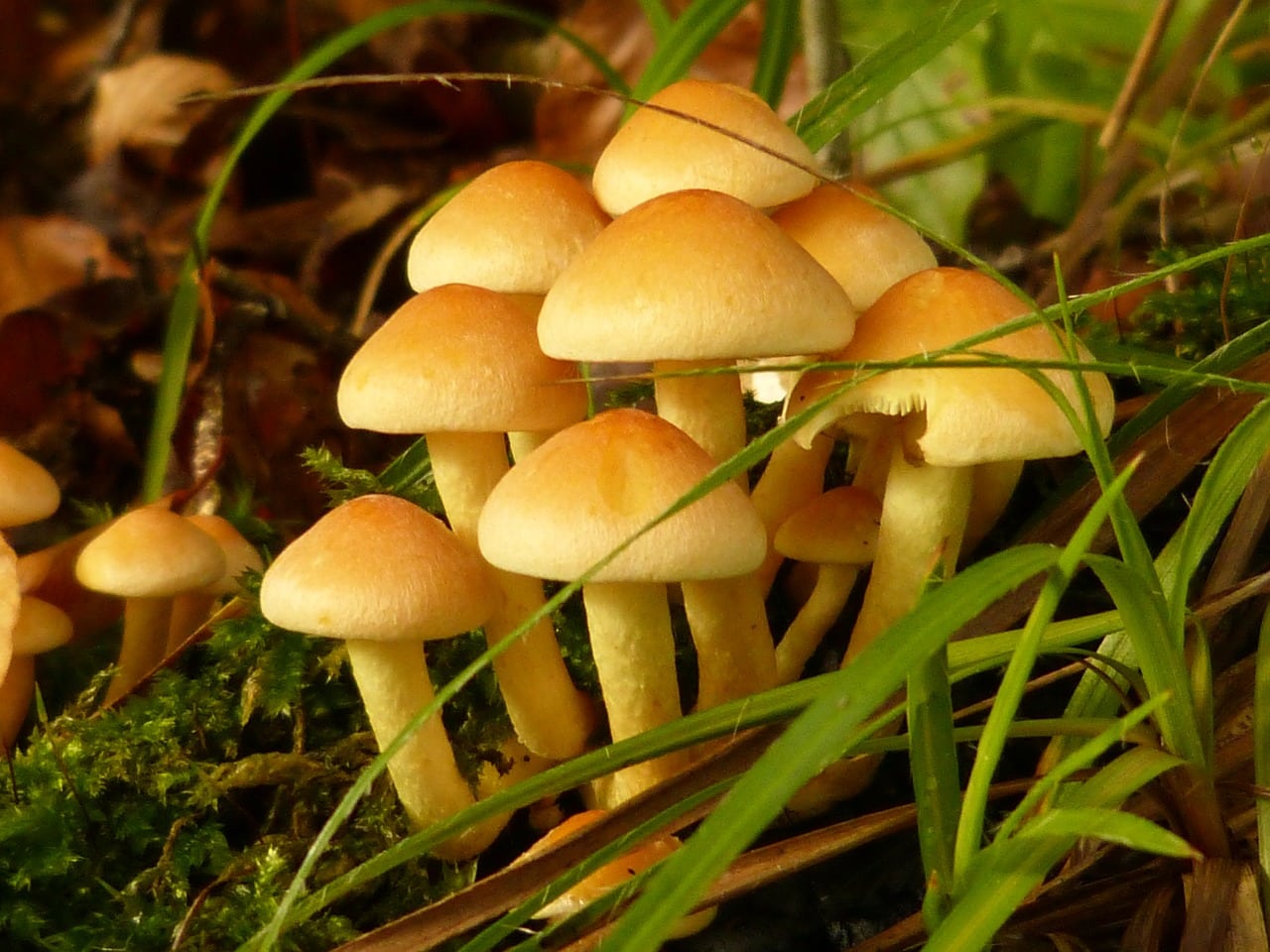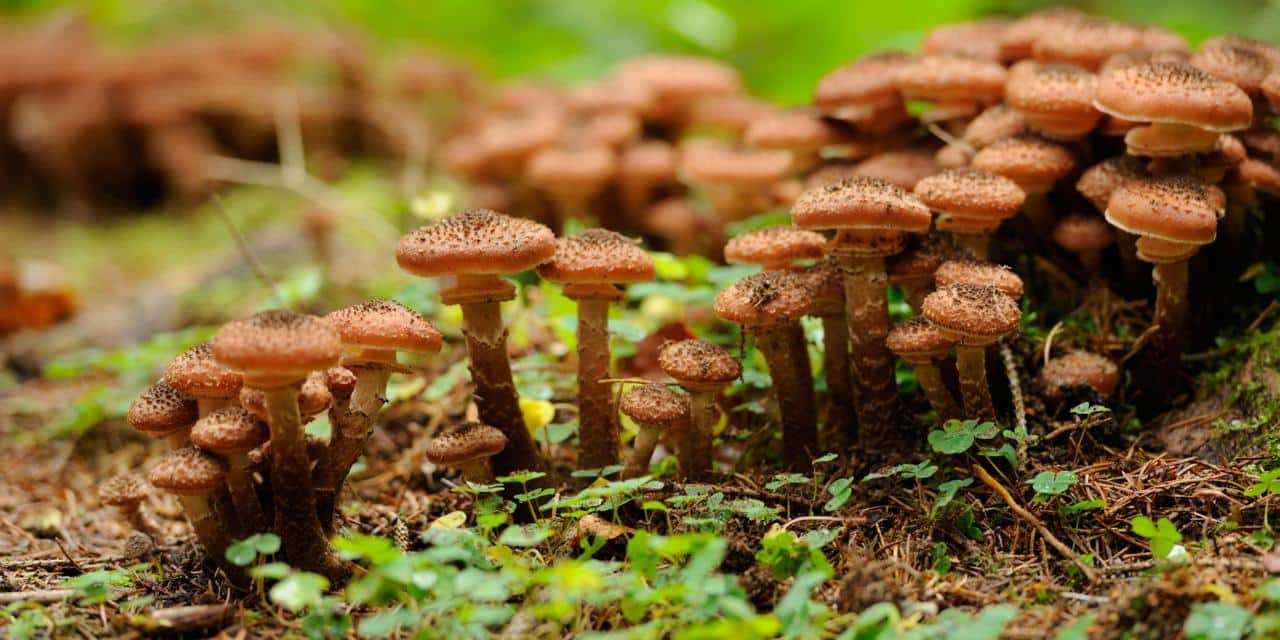Scientists Analyse the Genome of World’s Largest Organism
Twenty-five years ago, James Anderson discovered a fungus that expanded the possibilities of life on Earth.
The fact that the largest organism on Earth is a fungus and not some gigantic whale or a mighty gorilla is dang against our anthropocentric ethic. Admittedly strange, but true nonetheless.
Sure, the blue whale is big but nowhere near as huge as a sprawling fungus that kills anything in its path, currently taking up more than three square miles of eastern Oregon- living on approximately 2,384 acres (965 hectares) of soil in Oregon’s Blue Mountains. Put another way, this humongous fungus would encompass 1,665 football fields or nearly four square miles (10 square kilometers) of turf. DAMN. That is actually bigger than the two smallest countries in the world combined.
Honey fungus is a common name given to multiple different species of fungi in the genus Armillaria. The fungus is a giant, but not so very friendly. Honey fungi are parasitic and kill a wide range of trees and woody plant species. Therefore they earned the nickname “Gardeners Nightmare”.
Sheer size aside, Armillaria fungi dominate in an entirely different category: they are among the most devastating fungal pathogens, causing root rot disease in more than 500 plant species found in forests, parks, and vineyards.
Fungi grow by expanding tubular filaments called hyphae, which form a web-like network. In this network resources are transported, as well as water, organic molecules and other important materials for the fungus. Resources are collected on the surface, where the mushrooms are. The mushrooms of the Armilaria are edible yellow-brown mushrooms. Mushrooms are the fruiting bodies of fungi. Imagine an apple tree entirely underground, but just the apples are above ground. Many people believe that mushrooms are only there to procreate but they actually have another extremely important function.
Mushrooms digest food. They actually excrete digesting enzymes, which breaks leafs on the ground apart for example. The small particles created by these enzymes are then taken up by the fungus. So basically, mushrooms are the mouths of fungi.
Alrighty, so you now know how monstrously huge this species of fungi is- it begs the question of HOW it got this big!?
In an attempt to find answers, a team of scientists have sequenced the genome of four of the numerous Armillaria species and compared them with genomes from 22 related fungal species to see what allows these few to grow so big.
“Armillaria species are some of the most devastating forest pathogens, responsible for forest decline in many temperate regions. There is thus a considerable interest in developing strategies against Armillaria spp, towards which understanding how they function in nature might be the first step,” said study senior author Nagy. “We are interested in how Armillaria use plant cell wall degrading enzymes (PCWDEs) when confronted with potential host plants.”
“Ever since I since I was a graduate student, I wanted to do exactly the study that was just published,” says Anderson, who is now a professor of biology at the University of Toronto. Anderson contributed a couple of genomes for the study, but the bulk of the research and analysis was done by György Sipos and László Nagy, of the University of Sopron and the Hungarian Academy of Sciences, respectively.
In Nature Ecology and Evolution, Sipos and his co-authors report that these Armillaria have unusually large genomes for rotting fungi. Moreover, all of them, but particularly A. ostoyae, the species from which the humungous fungus comes, are packed with genes that enhance their capacity to infect trees. These include genes that produce enzymes for breaking down lignocellulose, allowing a fungus to eat away at the roots of the forest. These genes give their possessor access to dead wood before degrading microbes can digest it, offering a huge competitive advantage.
Aside from A. ostoyae, the team also sequenced and analyzed the genomes of A. cepistipes, A. gallica and A. solidipes. These genomes were then compared against 22 fungal genomes, many previously sequenced and annotated by the DOE JGI. They cataloged 20 gene families related to pathogenicity in the fungi and identified enriched PCWDE families, the better to efficiently break down and access nutrients in dead wood. To help explain the unusually large fungal genomes in the Armillaria genus, they also found duplicated genes, suggesting Armillaria evolved primarily through gene family expansion and not transposable elements or “jumping genes.” The Armillaria fungal genomes are all available on the DOE JGI fungal genomics portal MycoCosm along with the fungal genome sequences used for comparison.
Nagy also pointed out that the research also sheds light on one of the long-standing questions in biology: the evolution of multicellularity. “Our comparative genomics and RNA-Seq data suggest that the development of rhizomorphs — shoestring-like structures that spread through the substrate in search for new food sources and can cross several feet underground — have a lot in common with that of fruiting bodies — both being complex multicellular structures,” he said.
The forest service has had samples taken throughout the fungus’ range and DNA measurements confirm its status as a single living thing. From its rate of growth, the humongous fungus is estimated to be at least 2,400 years old.
























